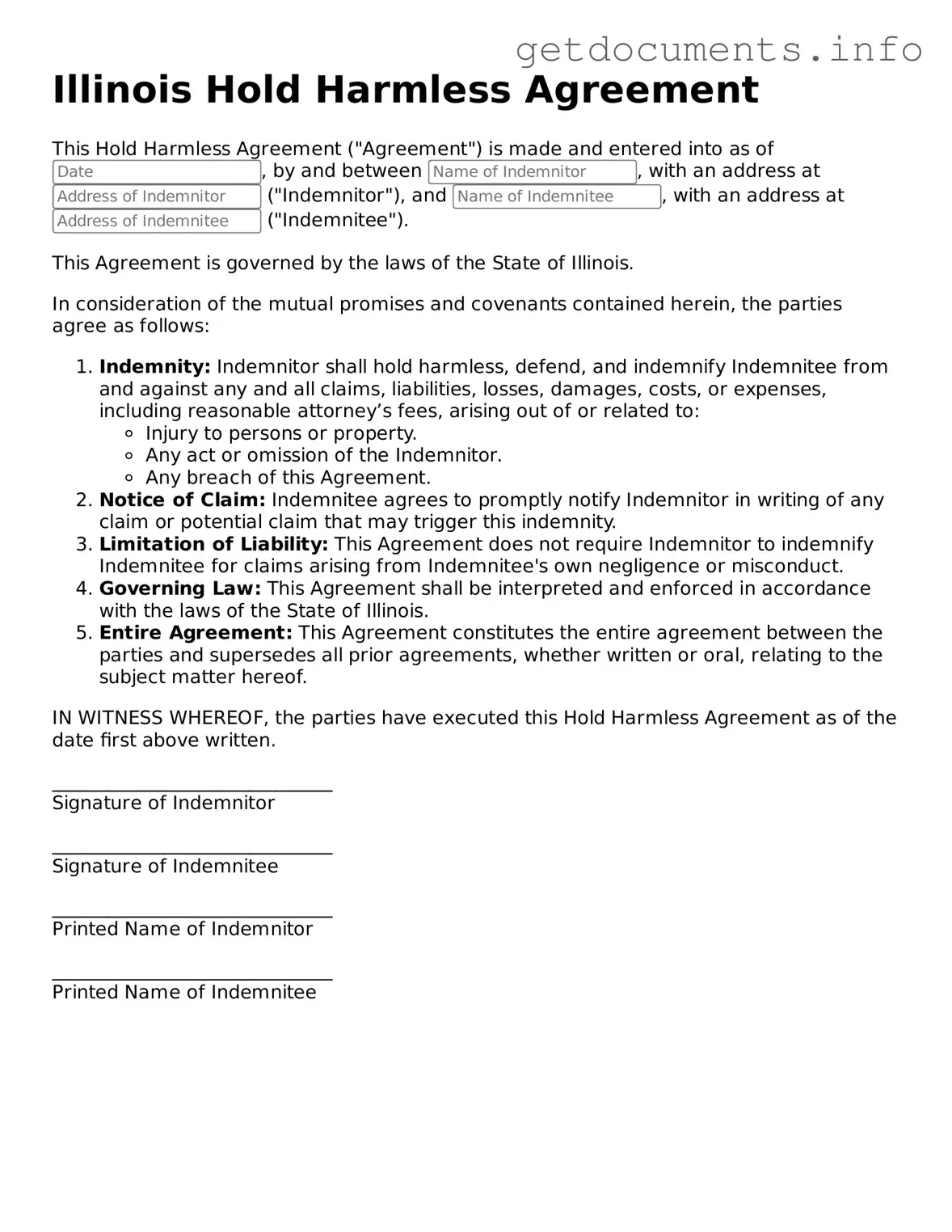Free Hold Harmless Agreement Template for Illinois
The Illinois Hold Harmless Agreement is a legal document designed to protect one party from liability for damages or injuries that may occur during specific activities or events. This agreement ensures that participants acknowledge the risks involved and agree not to hold the other party responsible. Understanding and properly filling out this form is essential for safeguarding your interests; click the button below to get started.
Access Hold Harmless Agreement Editor
